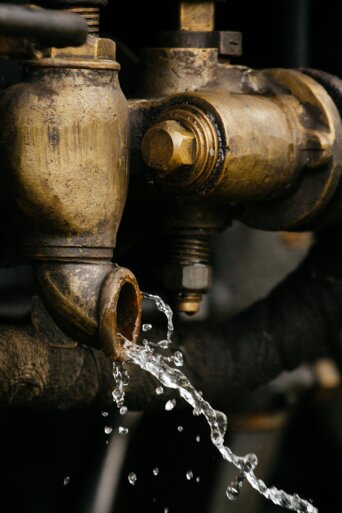- About
- Topics
- Picks
- Audio
- Story
- In-Depth
- Opinion
- News
- Donate
- Signup for our newsletterOur Editors' Best Picks.Send
Read, Debate: Engage.
| topic: | Sustainable Development |
|---|---|
| located: | Croatia |
| editor: | Katarina Panić |
Editor’s Note: This article is part of our groundwater campaign, in observance of the UN Water Day. Find more groundwater-related articles here.
Over-abstraction of water is one of the most common pressures on Croatia's EU-ecological status. Although the youngest member-state has plentiful groundwater bodies, poor governance has failed to implement sustainable water management infrastructure. Namely, it is estimated that half of all water is lost between water wells and customers, making it impossible to charge for it. Meanwhile, according to the European Environment Agency, water scarcity and water stress are expected to affect about half of EU river basins by 2030.
The problem of non-revenue water (NRW), as this lost water is called, is universal, ranging from about five percent to as much as 80 percent in certain areas. The EU defines between 15 to 20 percent as an acceptable ratio of leakage level. In Croatia, however, the country's average is 50 percent, while there are areas with as much as 86 percent, such as the municipality of Gračac, followed by Hrvatska Kostajnica and Dvor na Uni that lose 80 percent of their extracted water.
The large majority of this water is lost through leaks in old and badly maintained water distribution networks, whose pipes are between 50 and 60 years old. In the capital Zagreb, there are even pipes from the Austro-Hungarian empire, which collapsed during WWI.
However, some regions, such as the Adriatic area Istra, have halved their water losses from 35 to 17 percent in only a few years. Although the whole region has fixed prices of water instead of market-oriented variable prices, it has still decided to prioritise investment in water management. The regional government launched a service to investigate NRW, bought equipment and software, and educated the staff to detect all critical points of leakage. Then they started to remove the weakest links one by one to prevent creating pools of groundwater, which should not build up.
"Living in the south, we used to experience thirst, so we have always given more importance to water. We might not be so involved if we had a river, but we always had water reductions. That's why we focused on reducing losses, and we're at the forefront of that," Valter Batel from the water supply company in the coastal town of Pula told local media.
If fear of thirst won’t motivate authorities to act similarly to Istra, money will. Namely, a new EU regulation will take effect next year requiring that water be charged not at the rate of delivery, as it is now, but at the rate of extraction. Therefore, the state decided to invest 100 million HRK per year ($15 million) to reduce leakage rates by at least 50 to 25 percent.
Image by Burns Plumbing.

